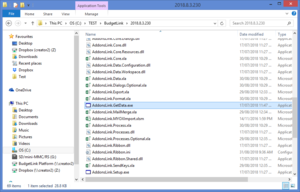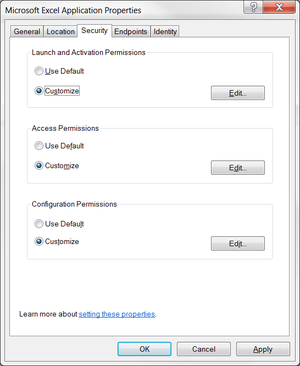Auto Upload
Overview
Auto Upload is a function that runs the Get Data process on a schedule. The main purpose of Auto Upload is to remove the manual running of the Get Data process and to move the processing to a non-productive time such as overnight.
How to test to ensure Auto Upload can run
BudgetLink requires the Auto Upload function to be switched on before this process will work. Once switched on, we recommend you test out that it is configured correctly and can run. You can do so by following these steps.
- Ensure that BudgetLink is closed;
- Locate the Auto Upload.xls file in the BudgetLink System folder and double click to open;
- BudgetLink will then open, start the Get Data process and then close when the Get Data process is complete.
How to set up Auto Upload
To setup Auto Upload, please follow these instructions. Note that these instructions are dependant on the version of windows you run and may vary slightly. It is also highly recommended that you get your IT personnel to setup the scheduled task.
- Click Start, then Control Panel, then Administrative Tools, then Task Scheduler;
- In the Task Scheduler form, select Create Basic Task;
- Enter a Name for the task (for example BudgetLink Get Data) and click Next;
- In the Task Trigger form, select the period for the Auto Upload to occur and click Next;
- In the Daily form, enter the Start date and time that the first Auto Upload will occur and click Next;
- In the Action form, select Start a program and click Next;
- In the Start a Program form, click Browse… and select the Auto Upload.xls file in the BudgetLink System folder and click Open;
- The path of the Auto Upload.xls file will display in the Program/script field. Click Next;
- In the Summary form, select Open the Properties dialog for this task when I click Finish and click Finish;
- In the General tab, select Run whether user is logged on or not. If you do not have Administrator rights then click Change User or Group… and change the user to be the Administrator. Click the Actions tab;
- In the Actions tab, click Edit. The Edit Action dialog box will appear.
- In the Program/script field, ensure that the path is a UNC path and not a mapped drive. A UNC path begins with the server name. Click OK to close the Edit Action dialog box and click OK to close the Properties dialog box. Enter your password if required.
- To test the Auto Upload process, select Task Scheduler Library to the left of the Task Scheduler form. Select the Auto Upload task and click Run.
Notes
- When choosing a time to run the auto upload process, ensure your chosen time does not conflict with backups or other system processes.
- When browsing to the Auto Upload.xls file, ensure that the path is a UNC path and not a mapped drive. A UNC path begins with the server name.
Required folders for auto upload
In order for newer versions of windows to run excel spreadsheets as a scheduled task, the following folders must exist. The default windows setup may not have created them. While these folders do not need to contain anything, they are required by Excel somehow in order to launch correctly. If they are missing, it is possible that the scheduled task will launch but excel will not run any code or macros (e.g. you will see excel.exe in the task manager but it will be using 0% CPU).
This folder is required for Microsoft Excel 32-bit
C:\Windows\System32\config\systemprofile\Desktop
This folder is required for Microsoft Excel 34-bit.
C:\Windows\SysWOW64\config\systemprofile\Desktop
Notes
- As stated before, they do not need to contain anything but they must be present.
Required DCOM settings for auto upload
In order for newer versions of windows to run excel spreadsheets as a scheduled task, the related DCOM components must be created correctly. DCOM is used to allow applications to communicate with each other. In this case, it is use by the task scheduler to talk to Excel. If it is not configured correctly, it is possible that the task will not even launch (e.g. you will not see excel.exe in the task manager).
To configure DCOM, follow these steps.
- From the windows Start menu, type run, and then mmc comexp.msc /32 for 32-bit excel or dcomcnfg for 64-bit excel;
- Navigate to Component Services, then Computers, then My Computer and click on DCOM Config;
- Find Microsoft Excel Application, right-click on it and choose Properties;
- In the Security tab, under Launch and Activation Permissions, select Customize, click Edit and add the required account or user group;
- In the Security tab, under Access Permissions, select Customize, click Edit and add the required account or user group;
- In the Security tab, under Configuration Permissions, select Customize, click Edit and add the required account or user group;
- In the Identity tab select The launching user and ensure the user used for the scheduled task is correct;
Related Topics
Questions
- What happens if the Task does not end?
- Should Settings - Stop the task if it takes longer than 1 hour ?
- If the task is already running then Stop the existing instance


